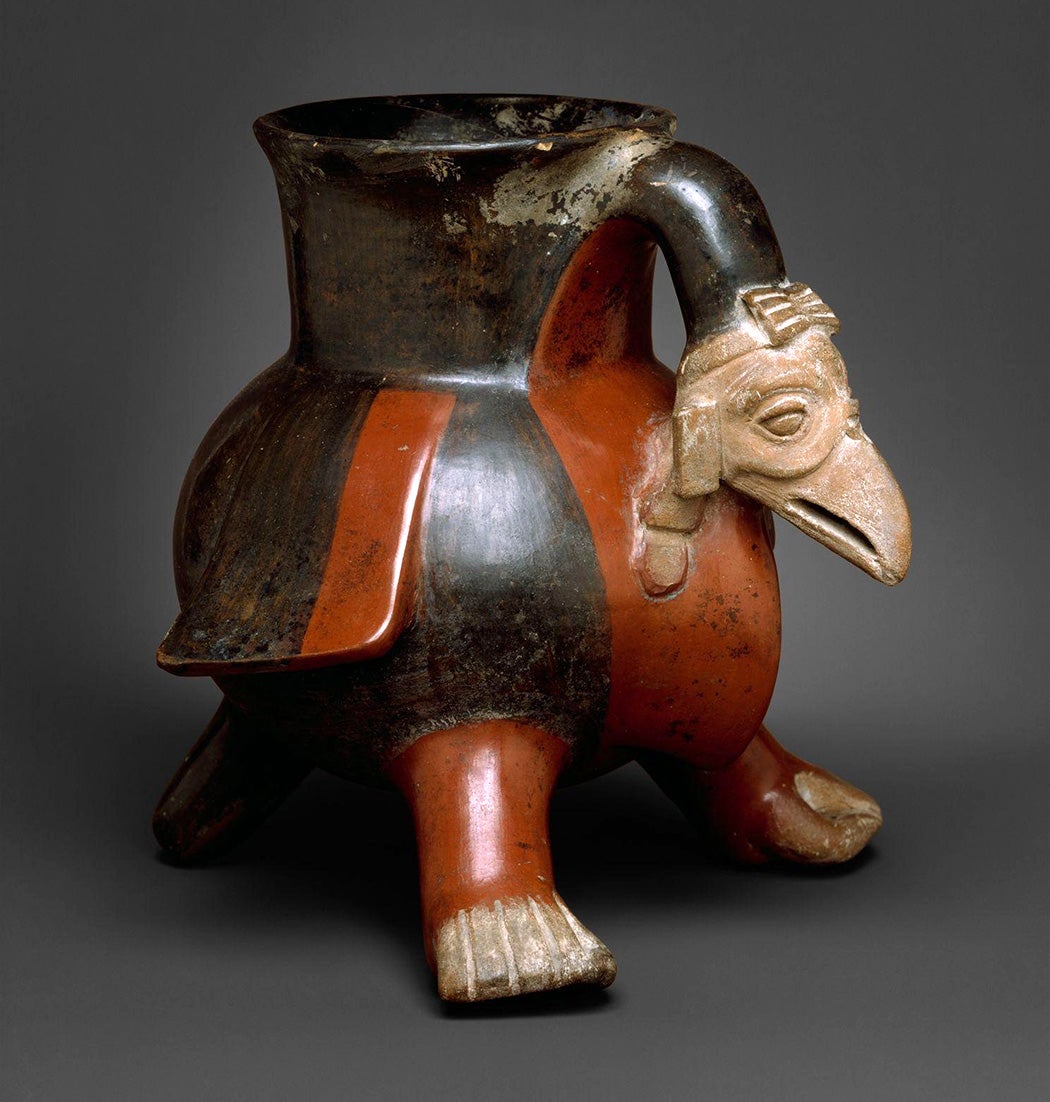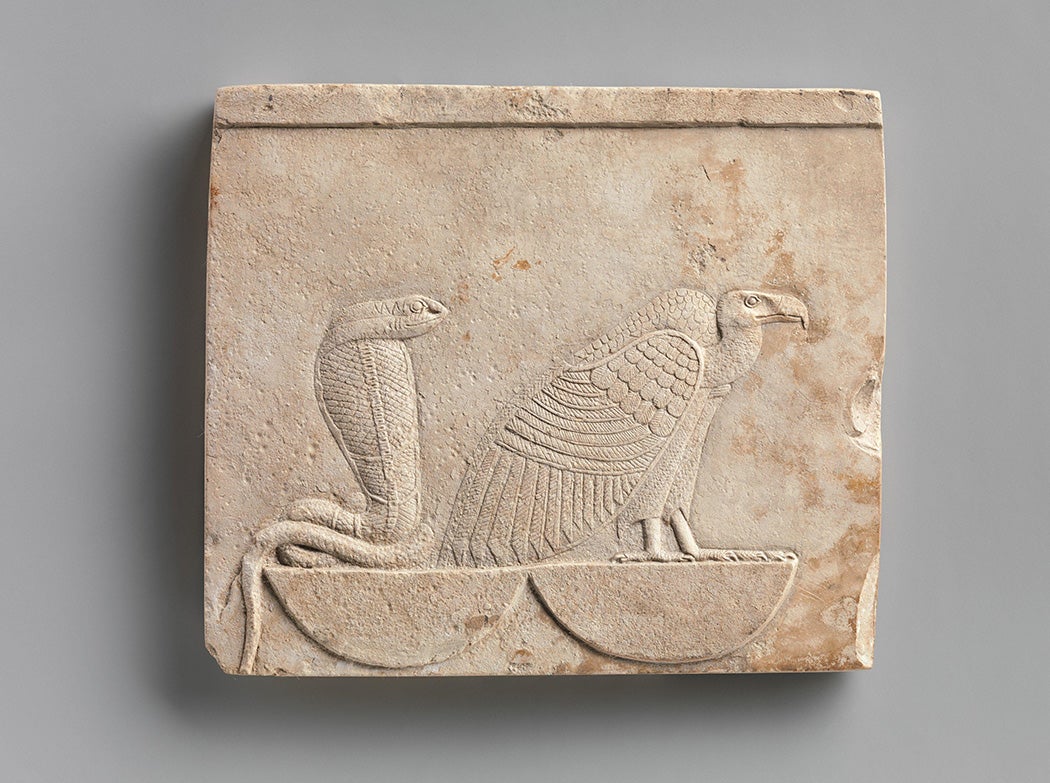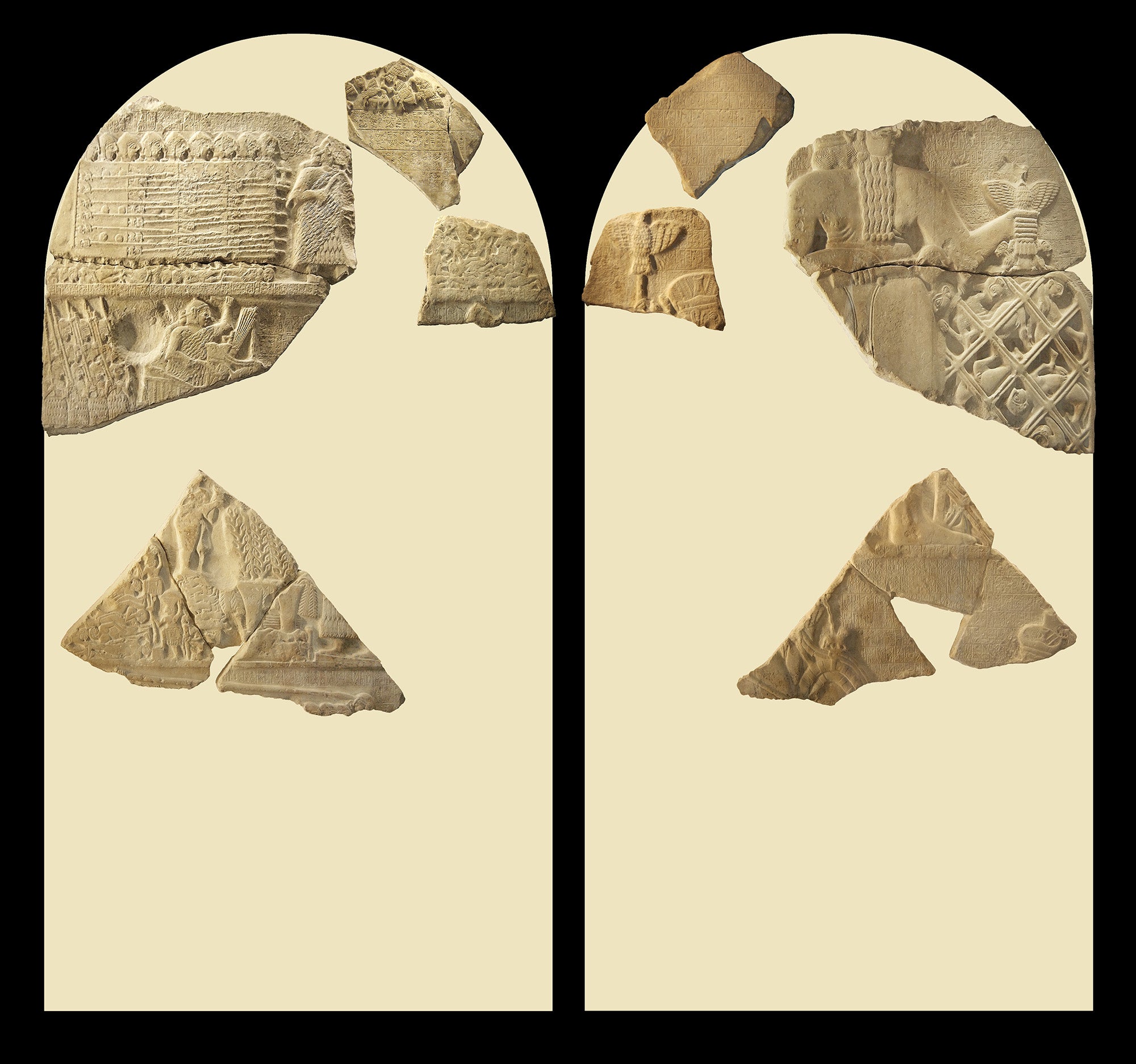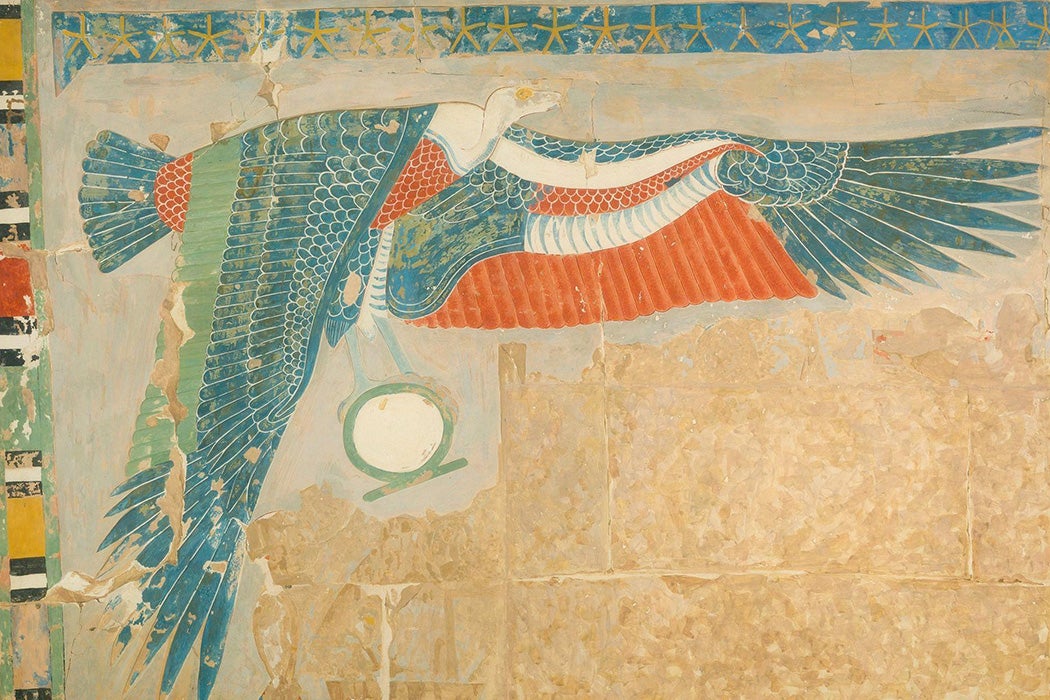Vultures may have the worst marketing in the entire avian world. In reality, they’re both useful and majestic, practical and beautiful, and yet, those are rarely the adjectives anyone first thinks of when they hear the word “vulture.”
Twenty-three species of vulture soar over five continents, and include some of the largest flying birds on Earth. They perform a vital role in the ecosystems they inhabit, cleaning up carcasses that would otherwise continue to rot, thereby reducing the spread of deadly diseases like anthrax and rabies. Nevertheless, their association with death marks them in the popular imagination as the very antithesis of cleanliness. They are regarded as dirty, greedy, untrustworthy creatures, an image that has largely followed them through thousands of years of art. There are other ways to see and depict the vulture, as there are other ways to consider death; indeed, how a society chooses to represent the bird says as much about the artist and culture as it does the subject.
Vultures, With Us From the Start
Vultures were intimately involved in some of the world’s oldest known works of art and craft, with creative uses of the animal’s body parts as tools in the ancient world. Found in the Hohle Fels cave in Southern Germany, a flute made from the bone of a griffon vulture dates back at least 35,000 years; its sophistication—five finger holes and a V-shaped mouthpiece—suggest that the craft of vulture bone flutes is even older.
Probably the oldest surviving representation of a vulture may be from about 11,000 years ago near what is now Anatolia, Turkey. The so-called “Vulture Stone” of Göbekli Tepe shows an animal with its unmistakable beak shape and neck stripes, holding an object—perhaps an egg—in its claw, as if offering it to an unseen recipient. Some archeologists believe the site to be the premises of the oldest human-built temple in the world today.
Weekly Newsletter
Indigenous people have depicted vultures in their artwork and stories variously as messengers of the gods, ferrying dead souls to the afterlife, or malicious spirits that bring death with them.

To the Kamayurá people of Brazil, the Milky Way in the night sky was ruled by Urubutsin, a two-headed vulture god, who once greedily kept all the light in the universe to himself. Later defeated, he was forced to share that light, giving half to the sun and moon. Some researchers have found that around the first century AD, images of vultures were more common than those of other animals among discovered gold artifacts. In many early Mesoamerican cultures, the animal was also depicted on pottery and statues. Based in Central America, the Maya had a complicated spiritual relationship with the vulture. Though they associated it with death and misfortune, the Maya also honored the vulture as a sacred creature. That balance is more common in Indigenous belief systems across the world than in Western religions. Neither good nor evil, the vulture is simply a force of nature with both positive and negative aspects, and clearly an important one across cultures and traditions.
The Mother Goddess of Egypt
Nomads likely first traversed the area known today as Egypt at least 400,000 years ago, as evidenced by carved stone tools found throughout the region. It was not until about 6000 BCE that they started settling in these areas, including along the Nile River; much later these groups coalesced into the earliest form of the country we know as Egypt. From the beginning, the vulture was a central symbol of the region as well as of its new ruling class of pharaohs and of the important deity, the goddess Nekhbet.
Nekhbet was the patron first of the city of Nekheb, then of the whole of Upper Egypt; from the beginning, she was symbolized by the vulture. Vultures were associated with death, but also life and birth. In fact, the Egyptian word for mother was written with the vulture hieroglyph. Nekhbet’s priestesses performed their rites dressed in vulture feathers. The sacred association of vultures spread from Nekhbet to goddesses like Isis and Mut, interestingly always retaining its link with the feminine side of the Egyptian pantheon.

After the unification of Upper and Lower Egypt around 3000 BCE, the animal symbols of the two regions, the vulture and the cobra, became synonymous with the pharaohs. For centuries, the leaders of Egypt were always depicted wearing both, symbolizing the new unity of the state.
The Birds of War
Around 2450 BCE, two Mesopotamian city-states called Lagash and Umma went to war over a piece of rich farmland on their border. It was certainly not the first war in human history, but it did produce what’s reported to be the oldest surviving war monument, the so-called Stele of the Vultures, a stone relief commissioned by the king of Lagash.

The Stele depicts the war between the neighboring states and its aftermath in a series of distinct vignettes. One fragment shows a climactic scene of battle, with vultures carrying off the heads of the defeated Ummite soldiers; another shows their bodies left in unburied heaps. Scholars have argued that this scene represents a threat beyond death, functioning not only as a “commemorative monument,” but as a witness to “the consequence that would result were Umma to break its oaths.” The Epic of Gilgamesh tells that “He whose body lies (unburied) on the steppe…his spirit does not rest in the underworld.” It was powerful propaganda. Fight us, and more than just your body is at risk.
The Stele was innovative not only as arguable propaganda, but as art in itself. It might even be described as an early form of what we understand today as “multimedia.” Many surviving works from early Mesopotamia are either purely text or almost entirely image, with only a few names and short notes to accompany the art. The Stele breaks this binary by telling its story both visually and with longer sections of text. The two are inseparable and equally important. There are details in the text that are not covered in the artwork, and vice versa. For the time, this must have been a powerful storytelling device.
Vultures continued to appear in war and political propaganda throughout the modern age. In the early 1800s, Spanish artist Francisco de Goya began to sketch his impressions of Napoleon’s conquest of Europe. After his death, they were published in a volume called Disasters of War (1863). In one notable image, he drew vultures picking at corpses in the conqueror’s wake. In a time when war was mostly memorialized in glory by the victors, Goya’s sketches were in their own way as innovative as the Stele thousands of years earlier. They showed the truth of war as gory and horrific. Where the Stele had used this horror to inspire fear in enemies, Goya inspired fear of war itself, and the horrors it caused men to do to each other.
Across the Atlantic, vultures were used by both sides in the American Civil War to symbolize the opportunism, greed, and desperation of the enemy. An envelope printed in New York during the war shows a man with a bird’s head carrying cotton into a bank. Notably, though the caption reads “The Southern Vulture: ‘hard Up,” the bird head is depicted more like an eagle, symbolizing the descent of the South from a part of the United States to a bird that the artist saw as lower or less honorable.
Where We Stand Today
In the twenty-first century, our impressions of vultures remain negative, tainted with suspicion and disgust. We disparage rich investors as “vulture capitalists” and deride “culture vultures” who appropriate the customs of others. Earlier this year, Kanye West, a figure as divisive politically as he is artistically, dropped Vultures 1, the first of a series; its initial release had been postponed partially because of controversy over the performer’s anti-Semitic comments. Outcries notwithstanding, the album debuted at #1 on the Billboard 200.
Like any pattern of artistic depiction, how we see and show vultures has higher stakes than we might think. As Senegalese forestry engineer Baba Dioum famously said, “In the end, we will conserve only what we love; we will love only what we understand and we will understand only what we are taught.”
Vultures get little in the way of love, and that has had profound ecological and public health effects on their population. In India and Africa, humans have killed—both intentionally and unintentionally—the majority of vultures, eliminating too the sanitary services they have long provided. The more scientists learn about vultures, the more we understand how vital they are to ecosystems and to us. If we are going to protect them—and allow them to continue protecting us—we will need to shift our perspective on vultures. We can choose to heed the lessons of traditions that revered these birds, leaving our fear and hatred for them in the past, where they belong.
Editor’s Note: This article has been amended to change “shoes” to “shows”.







